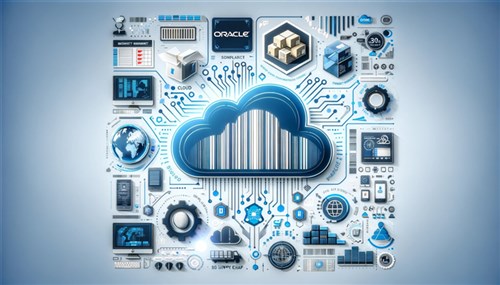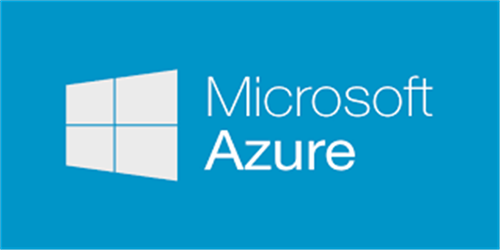.pngL.jpg)
A picture is worth a thousand words.
You have probably heard this a lot of times, especially while working in the field of data analytics. Through graphic data visualisation, you present your data in a consumable way in the form of charts, maps, graphs, etc to form a meaningful story. This process comes in handy when you have a lot of data to present without losing your viewer’s attention.
In this guide, you will learn everything you need about data visualisation, its definition, types, importance, how to learn and what learning resources are available. If you want to present, share and communicate insights that are data-driven, then this guide is for you.
What Is Data Visualisation
Data visualisation is the visual or graphical representation of data. Using such representations, you can bring the most valuable insights from a data set to the front. This makes it easier for the viewer to spot trends, outliers, correlations and patterns.
Imagine presenting a spreadsheet with tons and tons of data in a meeting. Neither you nor your colleagues will be able to decipher the data without having to read each point in detail. Spotting any kind of trend in such a case is out of the question!
But, what if this data is displayed in a bar or line graph or pie chart? The colours and the visual representation of the ups and downs in the data make it easier for you to understand what the data is trying to display, correct?
Data visualisation helps make insights visible to the naked eye so that everyone is able to understand what is happening without any deep data dives. When data visualisation is done well, it tells you a story. The story-telling aspect of data visualisation is important since that’s what makes your insights actionable.
You may have a lot of data without knowing what to do about it. Here’s where data visualisation comes in. It helps you drive decisions and actions from it by bridging the gap efficiently.
Now, there are two main types of data visualisation: exploration and explanation.
Types of Data Visualisation
Exploratory
When you get a data set, you will conduct an exploratory data analysis. You will investigate the data set, identify the main features, and lay the foundation for a more thorough analysis. Data visualisation at this stage allows you to get a sense of what’s present in the data set and help spot any patterns or anomalies. You are just finding clues as to what the data set is telling you.
Explanatory
Once you have insight into what the data set is trying to tell you, you will be sharing them with others. These people could be important stakeholders who will want to take action based on the data you present. Explanatory graphic data visualisation tells them the story of this data set and you need to decide what kind of visualisations will be most effective.
In short, you figure out your data with exploratory data visualisation and communicate your findings through explanatory data visualisation. You explore while you are analysing and you explain at the end of the process once your findings are ready to be shared.
Let’s now look at the advantages and disadvantages of data visualisation:
Advantages
Data visualisation is a form of visual art that demands our focus. Once you see a chart, you can quickly figure out a pattern and then internalise it. Data visualisation is storytelling with a purpose.
A report from Statista shows that the global big data market in 2021 is predicted to be worth a whopping $64 billion. This clearly shows that data industry, both processing and analysing, is a thriving industry. But, aren’t people in big data companies qualified to read the data directly? Why do they need their data simplified?
Easier to process
The main benefit of the visual representation of data in a graphical format is its consumability. The human brain can process imagery faster than the written word. Proving this theory correct, a few scientists from MIT found that the human brain is able to process full images that they see within 13 milliseconds.
Data visualisation is a useful tool for people who are either not familiar with large sets of data or are too busy to go through the unending sheets to withdraw insights and then plan actions.
Promotes learning
Recent research has shown that visual aids make for great teaching material as it motivates you to think and creates an environment of learning. Graphic data visualisation helps keep content clear and make it engaging for the viewer.
Identifies trends
Data visualisation makes data easy on the eyes. This allows you to identify trends or patterns quicker than you would on a spreadsheet with rows full of the raw data. The visual representation highlights the trends by cutting through unnecessary words, letters, symbols, etc.
Boosts productivity
It can help with productivity
using data to make forecasts and business decisions has become commonplace. modern data visualisation tools can help to process large amounts of infor mation, allowing businesses to make informed and quick decisions, and helpi ng with productivity and efficiency.
Disadvantages
A visualisation with multiple data points can lead to an incorrect assumption. Or sometimes, the visualisation is just designed incorrectly, so it becomes confusing or biased.
-
Correlation may not mean causation
-
Loss of core messaging in translation
-
Lack of finer details
Importance of Data Visualisation
We all live in a data-rich world where at the start of 2020, we had approximately 44 zettabytes of data in the digital universe. Giving you perspective one zettabyte is roughly equal to a trillion gigabytes. Through data analytics, we are able to make sense of some of that data. For businesses, this data analysis allows them to learn from what has happened and then prepare for the future. Data analytics has applications in various fields like healthcare, finance, insurance, etc. Data analytics helps you make smart decisions, and data visualisation is the enabler of these decisions.
Examples of Data Visualisation
You probably first think of simple bar graphs or pie charts when you think of data visualization. It is important to pair the right visualization with the right information, though these may be integral parts of visualizing data. Simple graphs only scratch the surface. Data can be visualized in a variety of ways that are interesting and effective.
Based on the data type and what you wish to convey or emphasize, you’ll need to choose the right visualization. The complexity and number of variables in your data should also be considered. Data visualization techniques vary in their ability to depict elaborate or complex data, so choosing the right one is crucial.
Some general types of visual representations:
-
Charts: Data is displayed along two axes. This can be a graph, map or diagram.
-
Table: Figures are shown in columns and rows.
-
Geospatial: Utilizes different shapes and colours to display data in map form, showing relationships between specific locations and pieces of data.
-
Infographic: Mix of words and visuals.
-
Graph: Relationship between variables along two axes at right angles, usually consisting of points, lines, segments, curves, or areas.
-
Dashboard: A single location for displaying data visualizations and analyzing your data.
There are some more specific visualisations that you can learn with time and experience.
Top 3 Data Visualisation Tools
There are multiple tools available online to help you create informative and eye-catching visualisations. Before you choose a tool, you need to figure out what type of visualisation you need to create along with your technical expertise.
Here are 3 tools to get you started:
-
Tableau: This is one of the most popular tools, thanks to its user-friendliness. You can create brilliant visualisations on Tableau without having any coding knowledge. It is also very proficient in handling large portions of data.
-
D3.js: A JavaScript-based data visualization library. In order to use this data visualization tool, you will need some programming knowledge.
-
Plotly: Python-based open-source software. A highly customizable visualization can be created with Plotly if you have some coding knowledge.
Every tool meant for data visualisation or data analysis can range from intuitive to obtuse, from simple to complex. Not every tool may be the right one for you and not every tool may be right for your needs. You must also remember that your visualisation theory and skills will top any tool or online product. Once you have decided that you want to learn and pursue a career in data visualisation, focus on following the best practices and find your own personal visualisation style.
Data visualisation is here to stay so build a strong foundation of exploration, storytelling and analysis that you can carry with you regardless of what software or tool you may end up using.
Data Visualisation Best Practises
While data visualisation is considered an art form, its true purpose is to provide the user with valuable insights and consumable information. If you are able to do this with powerful visualisations, you are already a winner!
So, to create great Tableau or any other data visualisations, you will have to follow some best practices. They will help you in keeping your audience informed, and engaged and strike the right balance.
Here are a few to keep in mind for now.
-
Clear purpose
Data visualizations need to serve a clear purpose, just like any data analytics project. How do you prioritize the information you want to convey? How should your visualization impact your audience? If you've got this clearly defined from the outset, you can make certain your audience is receiving valuable information and can take action on it.
-
Audience
You'll want to consider your audience's familiarity with the information you're presenting before you decide how to visualize the data. Data visualization is used to communicate insights to a specific audience. To help your audience understand your visualizations, what kind of context can you provide? Which types of visualizations are most likely to appeal to this group? Always remember who your audience is.
-
Simple is best
It's often better to create visualizations with fewer elements. The key to creating digestible visualizations is to remove any unnecessary information when you are present to keep the insights succinct and clear. Remember to ensure that your viewer doesn’t require too much cognitive load to process the information.
-
No distortions
If you want your findings to be understood and interpreted accurately, avoid using visual tricks. Your visualizations should be labelled and scaled appropriately. The graphical axis should start at zero rather than a number other than 100, for example, to prevent your audience from being misled by things like "blowing up" specific data segments. Make accuracy and integrity a priority!
-
Inclusive visualisations
Accessible and inclusive visualizations are essential. Make your visualization visually appealing by paying attention to colours, contrasts, font sizes, and white space. Regardless of whether your users have a twenty-twenty vision or a visual impairment, can they distinguish the data and see what’s going on?
To conclude
Data visualisation is a fascinating way to bring your data to life. You can make large sets of complex data understandable for everyone, irrespective of their background. Information keeps us updated and helps us make decisions. Visualisation helps break this information down and analyse it for actionable insights.





(1).pngM.jpg)
.pngM.jpg)
COMMENT